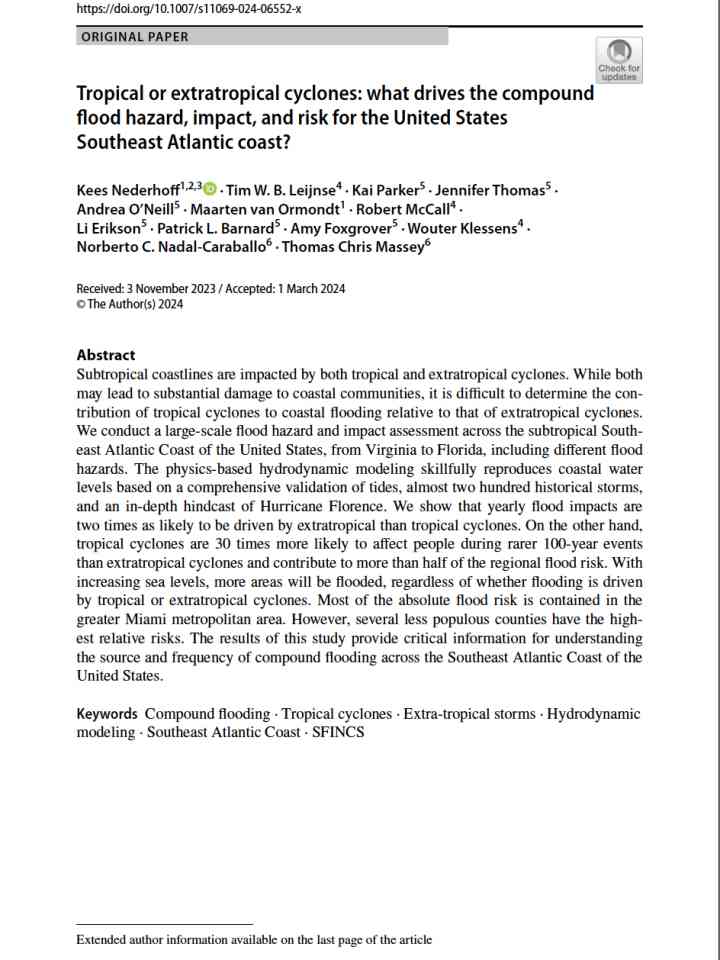Tropical or extratropical cyclones: What drives the compound flood hazard, impact, and risk for the United States Southeast Atlantic coast?
This study provides critical information for understanding the source and frequency of compound flooding across the Southeast Atlantic Coast of the United States. Subtropical coastlines are impacted by both tropical and extratropical cyclones. While both may lead to substantial damage to coastal communities, it is difficult to determine the contribution of tropical cyclones to coastal flooding relative to that of extratropical cyclones. Researchers conducted a large-scale flood hazard and impact assessment across the subtropical Southeast Atlantic Coast of the United States, from Virginia to Florida, including different flood hazards.
Using well-calibrated numerical models, it is shown that predicting both tropical and extratropical cyclones is vital for accurately assessing coastal hazards and impacts. Extratropical cyclones are mainly responsible for frequent flooding events. In particular, researchers find that for the current sea level, extratropical cyclones contribute to half of the flooded area. These events affect almost twice the amount of people compared to tropical cyclones with a yearly frequency. However, tropical cyclones drive the majority of the infrequent flood hazards.
Explore further
